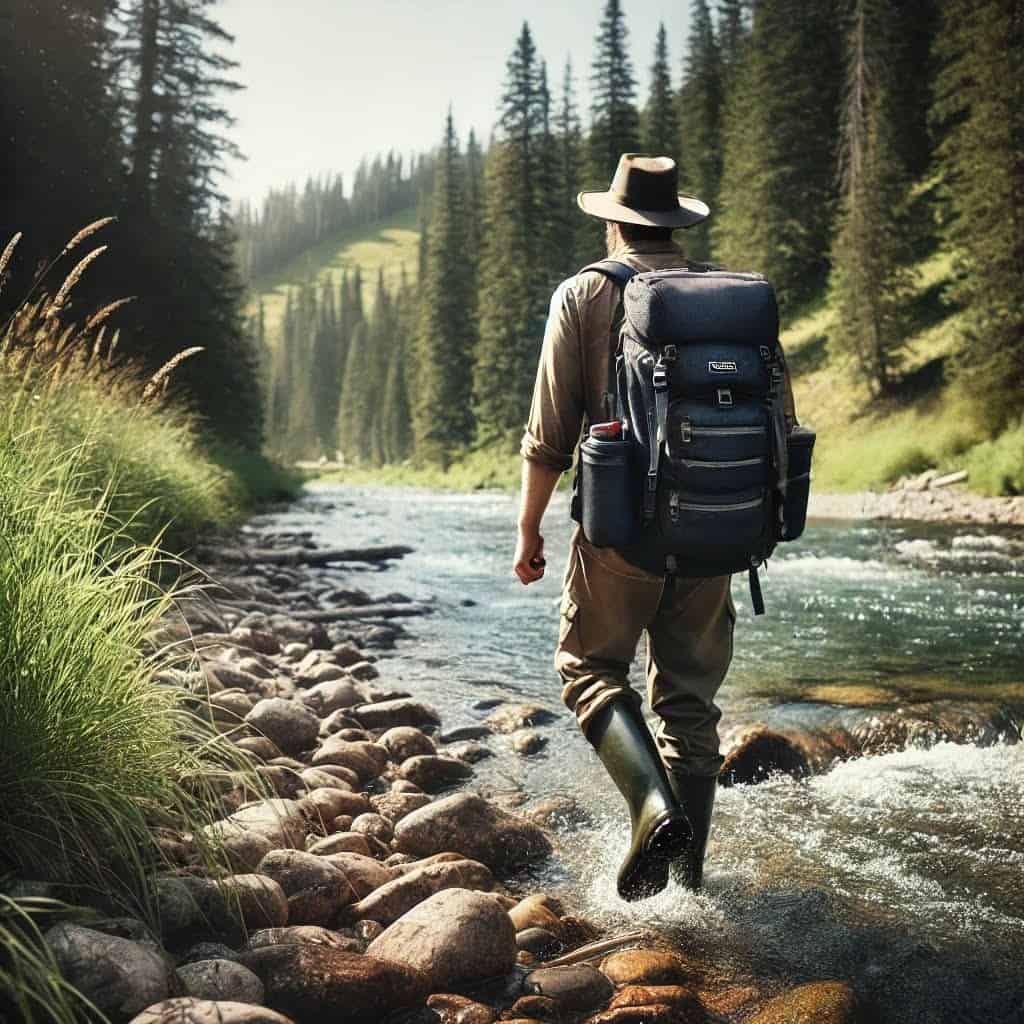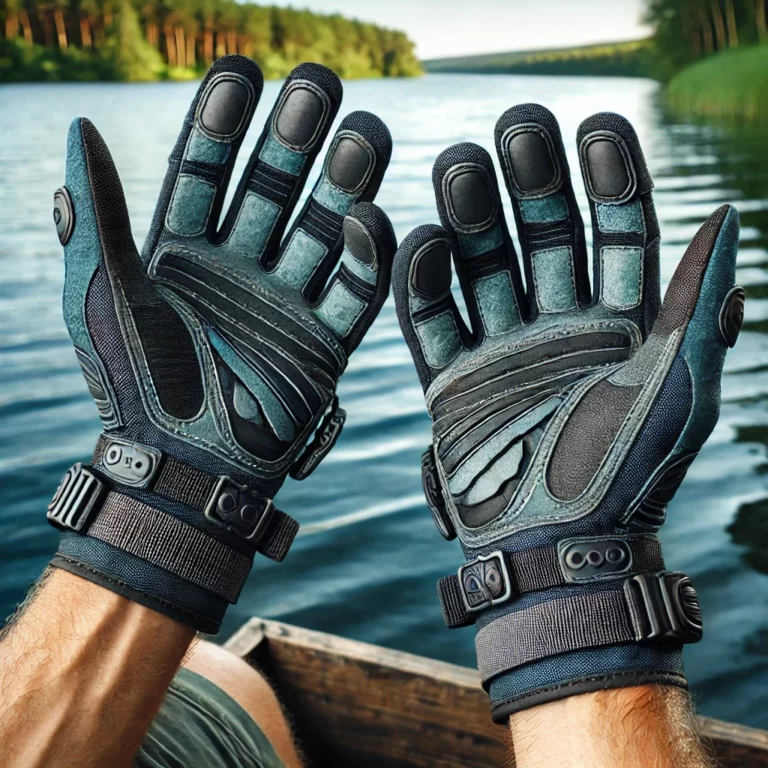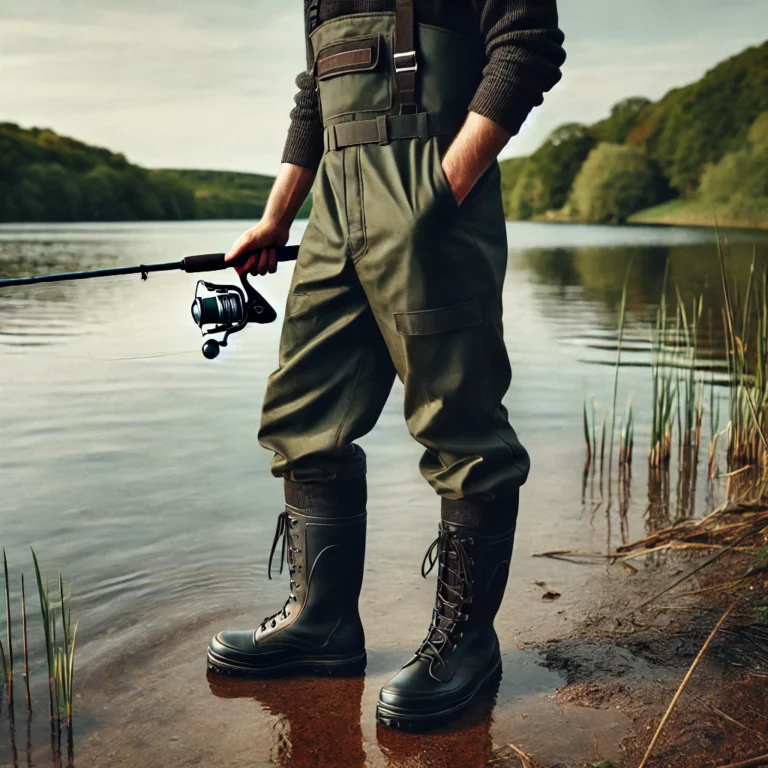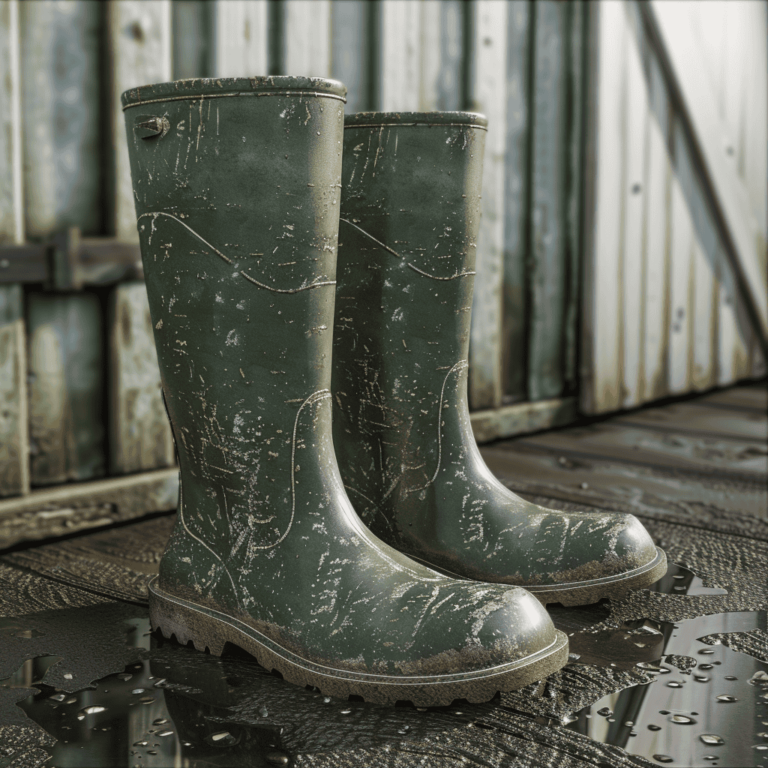Fishing Backpacks: Essential for the Mobile Fisherman
Fishing is a sport that requires the right equipment, preparation, and often, the ability to move swiftly from one spot to another.
Traditional tackle boxes have long been a staple for fishermen, but fishing backpacks have emerged as a superior alternative in recent years.
These versatile and efficient carriers are transforming the way anglers approach their craft.
In this comprehensive guide, we will explore why fishing backpacks are better than traditional fishing tackle boxes and how they revolutionize the fishing experience for the mobile fisherman.
The Evolution of Fishing Gear Storage

Traditional Tackle Boxes
The traditional tackle box has been the go-to storage solution for anglers for decades.
These rigid containers come in various sizes and configurations, typically featuring multiple compartments to organize hooks, lures, lines, and other fishing essentials.
While tackle boxes have served fishermen well, they come with several limitations.
- Limited Mobility: Tackle boxes are often bulky and cumbersome, making them difficult to carry over long distances or rugged terrain. Anglers who prefer to explore different fishing spots or hike to remote locations find traditional tackle boxes to be a hindrance.
- Organization Challenges: Despite having multiple compartments, tackle boxes can become disorganized quickly. Items can shift during transport, leading to tangled lines and misplaced lures.
- Limited Storage Capacity: Traditional tackle boxes have a finite amount of space, which can be restrictive for anglers who carry a variety of gear. Overstuffing a tackle box can lead to broken latches and damaged equipment.
- Inflexibility: The rigid structure of tackle boxes means they cannot adapt to the contours of the user’s body, making them uncomfortable to carry for extended periods.
The Growing Popularity of Fishing Backpacks
Fishing backpacks have emerged as a game-changing alternative, addressing many of the shortcomings of traditional tackle boxes.
These backpacks are specifically designed with the needs of mobile fishermen in mind, offering a range of features that enhance convenience, organization, and comfort.
Key Advantages of Fishing Backpacks
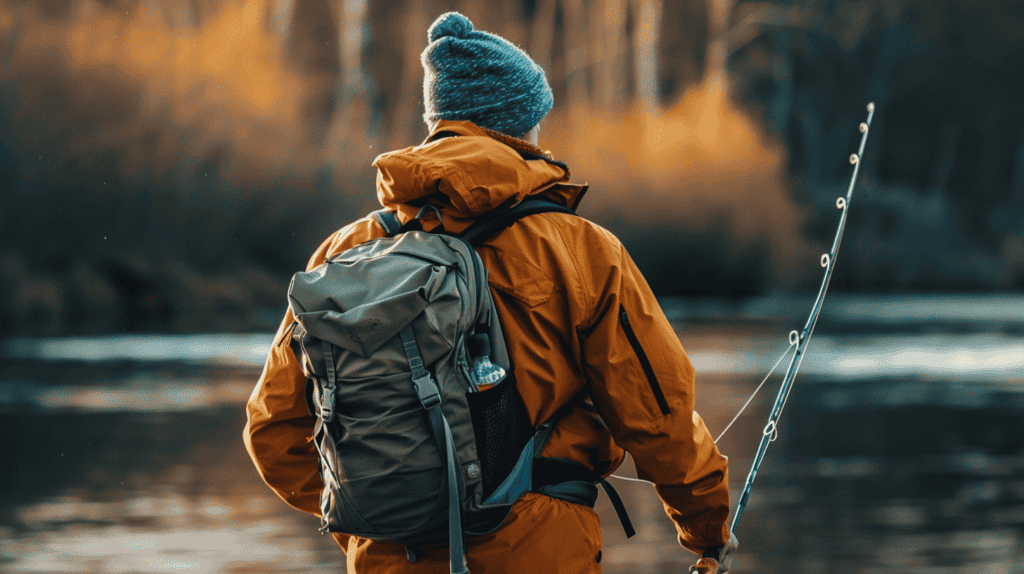
Enhanced Mobility
One of the most significant advantages of fishing backpacks is their ability to enhance mobility.
Anglers who prefer to move frequently or explore various fishing spots benefit immensely from these backpacks’ ergonomic design and weight distribution.
- Hands-Free Convenience: Fishing backpacks free up the hands, allowing anglers to navigate rough terrain, climb, or wade through water without the encumbrance of a tackle box.
- Comfortable Design: Most fishing backpacks are designed with padded shoulder straps and back panels, distributing the weight evenly across the back and shoulders. This design reduces strain and fatigue, enabling fishermen to carry their gear comfortably for extended periods.
- Adaptability: Fishing backpacks are typically made from flexible, durable materials that conform to the body’s shape. This adaptability makes them ideal for trekking through forests, along riverbanks, or across rocky shores.
Superior Organization
Fishing backpacks excel in organization, providing multiple compartments, pockets, and storage options that keep gear neatly arranged and easily accessible.
- Dedicated Compartments: Many fishing backpacks feature specialized compartments for different types of gear, such as rod holders, tackle trays, and insulated pockets for bait. This level of organization ensures that all equipment has its designated place.
- Modular Storage: Some fishing backpacks come with removable tackle boxes or trays that can be customized to suit the angler’s needs. This modular approach allows fishermen to pack only what they need for a particular trip, reducing unnecessary weight and clutter.
- Quick Access: With strategically placed zippers and pockets, fishing backpacks offer quick and easy access to essential gear. Anglers can retrieve their equipment without having to rummage through a single, cluttered compartment.
Increased Storage Capacity
Fishing backpacks typically offer more storage capacity than traditional tackle boxes, allowing anglers to carry a wider range of gear and supplies.
- Multiple Pockets: Fishing backpacks often feature numerous pockets of various sizes, providing ample space for storing additional items such as water bottles, snacks, first aid kits, and extra clothing.
- Expandable Design: Some fishing backpacks are designed with expandable compartments that can accommodate larger items or additional gear. This feature is particularly useful for multi-day fishing trips or when packing extra equipment for different fishing conditions.
- External Attachment Points: Many fishing backpacks include external attachment points, such as D-rings, MOLLE webbing, and bungee cords, allowing anglers to secure extra gear externally. This design maximizes storage capacity without compromising internal organization.

Versatility
Fishing backpacks are incredibly versatile, catering to various fishing styles and environments.
Fishing backpacks cater to anglers’ requirements across various scenarios, including boat expeditions, shoreline casting, and river wading.
- Waterproof Materials: Many fishing backpacks are made from waterproof or water-resistant materials, protecting gear from moisture and ensuring that essential items remain dry even in wet conditions.
- Insulated Compartments: Some fishing backpacks feature insulated compartments or cooler pockets designed to keep bait fresh or store caught fish. This feature is particularly valuable for anglers who need to keep their catch cool until they return home.
- Multifunctional Use: Fishing backpacks are not limited to fishing alone. They can also be used for other outdoor activities such as hiking, camping, or hunting, making them a versatile investment for outdoor enthusiasts.
Durability
Fishing backpacks are built to withstand the rigors of outdoor use, often featuring robust construction and high-quality materials.
- Reinforced Seams and Zippers: Quality fishing backpacks are designed with reinforced seams and heavy-duty zippers that can endure frequent use and harsh conditions.
- Rugged Materials: Many fishing backpacks are made from durable materials such as nylon, polyester, or canvas, which resist tears, abrasions, and punctures. This durability ensures that the backpack can handle the demands of fishing trips for years to come.
- Protective Features: Some fishing backpacks include additional protective features such as padded compartments for delicate equipment, rain covers, and reinforced bases to prevent wear and tear.
Choosing the Right Fishing Backpack
Selecting the right fishing backpack involves considering several factors to ensure it meets the angler’s specific needs and preferences.
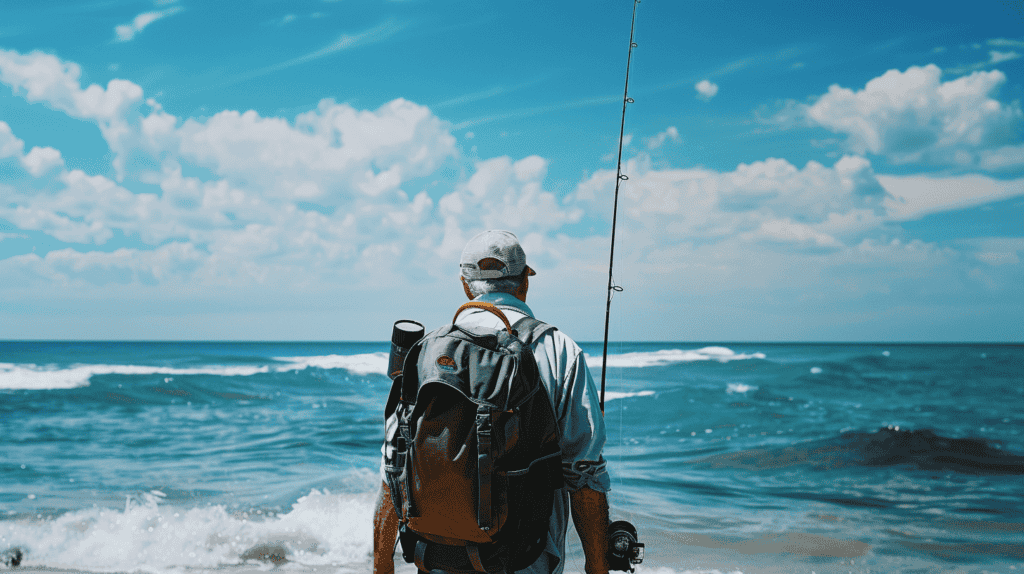
Capacity and Size
The capacity of a fishing backpack is a crucial factor to consider.
Anglers should choose a backpack that offers sufficient storage for their gear without being overly bulky.
- Day Trips vs. Multi-Day Trips: For day trips, a smaller backpack with a capacity of 20-30 liters (5.3-7.9 gallons) may suffice. For multi-day trips or those requiring more gear, a larger backpack with a capacity of 30-50 liters (7.9-13.2 gallons) or more may be necessary.
- Compact Design: While capacity is important, the backpack should also have a compact design that allows for easy movement and transport. Look for backpacks that balance storage space with a streamlined profile.
Organizational Features
The organization is key to an efficient fishing experience.
Anglers should look for backpacks with a variety of compartments and pockets to keep gear neatly arranged.
- Dedicated Tackle Storage: Backpacks with specialized tackle storage compartments or removable trays help keep fishing gear organized and easily accessible.
- External Pockets: External pockets for water bottles, pliers, and other frequently used items provide quick access without needing to open the main compartment.
- Rod Holders: Integrated rod holders or straps are a valuable feature for anglers who need to carry multiple rods or want to keep their hands free while walking.
Comfort and Fit
Comfort is essential, especially for anglers who spend long hours on their feet or hiking to remote fishing spots.
- Padded Straps and Back Panel: Look for backpacks with padded shoulder straps and a cushioned back panel to distribute weight evenly and reduce strain.
- Adjustable Straps: Adjustable straps, including sternum and waist straps, help secure the backpack and provide a custom fit.
- Ventilation: Backpacks with breathable mesh panels or ventilation channels help keep the angler cool and comfortable during hot weather.
Durability and Water Resistance
A durable and water-resistant backpack ensures that gear remains protected from the elements and can withstand the demands of fishing trips.
- Quality Materials: Choose backpacks made from high-quality, durable materials such as ripstop nylon, polyester, or canvas.
- Water-Resistant Coating: Look for backpacks with a water-resistant coating or waterproof compartments to protect gear from rain or splashes.
- Reinforced Construction: Backpacks with reinforced seams, heavy-duty zippers, and sturdy bases offer enhanced durability and longevity.
Additional Features
Additional features can enhance the functionality and convenience of a fishing backpack.
- Hydration Compatibility: Some fishing backpacks are designed to accommodate hydration bladders, providing easy access to water during long fishing trips.
- Integrated Rain Cover: An integrated rain cover offers extra protection during sudden downpours.
- Reflective Elements: Reflective elements or bright colors improve visibility in low-light conditions, enhancing safety during early morning or late evening fishing trips.
Packing it in
As how we “go fishing” continues to evolve, so too will the gear that we bring on this journey.
These versatile backpacks embody the spirit of modern fishing: adaptable, mobile, and efficient.
Fishing backpacks allow us modern anglers to carry more than just tackle; they provide space for essentials that enhance safety, comfort, and enjoyment during extended outings.
Moreover, the adoption of fishing backpacks aligns with the growing emphasis on conservation and responsible angling.
By enabling anglers to pack out what they bring in more easily, these backpacks promote a “leave no trace” ethos.
They also enable catch-and-release practices by providing better organization for tools and proper fish-handling equipment.
For the modern angler, a fishing backpack isn’t just an accessory; it’s an essential tool that opens up a world of possibilities on every fishing adventure.

